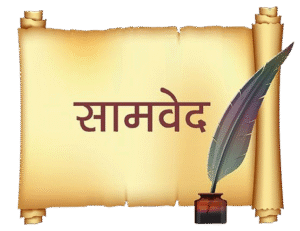Shrutis
The Shrutis
Shrutis in Hindu Philosophy
In Hindu tradition, Shruti is considered the highest form of sacred knowledge. The word itself means “that which is heard,” referring to divine truths revealed to the ancient rishis (sages) during deep states of meditation and spiritual realization. Unlike texts that are written by human authors, Shrutis are believed to be eternal, timeless, and free from human error. They are regarded as the ultimate authority in matters of spirituality, philosophy, and religious practice.
The Vedic Foundation of Shrutis
The Shrutis are primarily represented by the four Vedas—Rigveda, Yajurveda, Samaveda, and Atharvaveda. Each Veda has four layers: the Samhitas (hymns), Brahmanas (ritual instructions), Aranyakas (forest texts for meditation), and the Upanishads (philosophical teachings). Together, they provide a complete framework of life—covering rituals, moral duties, meditation, and the pursuit of ultimate truth. The Upanishads, in particular, are seen as the philosophical heart of the Shrutis, exploring profound ideas such as the unity of the soul (Atman) with the supreme reality (Brahman).
Philosophical Significance
The Shrutis form the foundation of all later Hindu scriptures, including the Smritis, epics, and Puranas. They guide human beings toward dharma (righteous living), jnana (spiritual knowledge), and moksha (liberation from the cycle of rebirth). Their authority is universal within Hinduism, transcending sects and schools of thought. Every major philosophical system in India, whether Vedanta, Mimamsa, or Yoga, looks to the Shrutis as its ultimate source of validation and inspiration.
Shruti in Indian Music
Beyond philosophy, the concept of Shruti also plays a key role in Indian classical music. In this context, Shruti refers to the smallest unit of audible sound or pitch variation that can be recognized by the human ear. Ancient musicologists identified 22 Shrutis within a single octave, which serve as the foundation of the seven basic notes (swaras). These subtle microtones allow for the rich variations, ornamentations, and emotional depth that make Indian music distinct from other musical traditions.
Universal Importance of Shruti
Thus, Shruti carries dual significance in Indian culture. In philosophy and religion, it represents the eternal voice of the divine, guiding humanity toward truth and liberation. In music, it represents the eternal essence of sound, shaping the beauty of melody and rhythm. In both cases, Shruti symbolizes what is fundamental, eternal, and directly experienced rather than invented—whether it is the cosmic wisdom of the Vedas or the delicate vibrations of sound that stir the human soul.
Meaning of Shruti
The term Shruti (श्रुति) in Sanskrit literally translates to “that which is heard.” It has a very sacred connotation in Hinduism, referring to divine knowledge that was not authored by human beings but directly revealed to enlightened sages in deep states of meditation. This makes Shruti eternal and infallible, unlike other texts considered to be composed by humans. It is the primary source of spiritual authority and forms the very foundation of Sanatana Dharma (Hinduism).
Shruti in Vedic Literature
In the scriptural sense, Shruti mainly refers to the four Vedas—Rigveda, Yajurveda, Samaveda, and Atharvaveda. Each of these Vedas is further divided into four parts: Samhitas (collections of hymns), Brahmanas (ritual and ceremonial explanations), Aranyakas (forest texts meant for contemplation), and Upanishads (philosophical treatises). These layers reflect a progression from ritualistic practice to deep meditation and finally to philosophical inquiry about the self and the ultimate reality.
Philosophical Essence of Shruti
The Upanishads, as the concluding portion of the Vedas, are often referred to as Vedanta—the culmination of knowledge. They emphasize concepts such as the oneness of the individual soul (Atman) with the universal reality (Brahman), the transient nature of the material world, and the ultimate goal of human life as liberation (moksha). This philosophical wisdom makes Shruti not just a religious scripture but also a timeless spiritual guide for seekers of truth.
Authority of Shruti
Unlike other Hindu texts, which are classified as Smriti (that which is remembered, such as Dharma Shastras, epics, and Puranas), Shruti is considered the highest authority. All later traditions, philosophies, and rituals within Hinduism trace their legitimacy back to the Shrutis. Even great teachers such as Adi Shankaracharya and other philosophers always rooted their commentaries in the authority of the Vedas and Upanishads. This underlines the supreme and universal status of Shruti in Hindu thought.
Shruti in Indian Classical Music
In the realm of music, Shruti carries a completely different but equally profound meaning. It refers to the smallest audible difference in pitch that can be recognized by the human ear. Ancient Indian musicologists identified 22 Shrutis in a single octave, which form the subtle microtones upon which the seven main musical notes (swaras) are built. These Shrutis provide the framework for ragas, allowing Indian music to achieve incredible depth, subtlety, and emotional expression.
The Role of 22 Shrutis
The 22 Shrutis are distributed unevenly across the octave, giving each swar its unique tonal space. For example, the note Sa (the tonic) and Pa (the dominant) are considered fixed, while others such as Re, Ga, Ma, Dha, and Ni can be sung in slightly different variations depending on the raga. This flexibility is what makes Indian classical music fluid and capable of expressing countless shades of emotion. Unlike Western music, which generally divides the octave into 12 equal semitones, Indian music’s Shruti system captures the natural vibrations and intricate beauty of sound more closely aligned with the human voice.
Dual Significance of Shruti
Thus, the concept of Shruti embodies two eternal aspects of Indian tradition—sacred sound and sacred knowledge. As scriptures, Shrutis are revelations of divine truth that guide spiritual life and liberation. As musical tones, Shrutis are the building blocks of melody and the key to expressing the subtle emotions of the soul. Both reflect the same principle—that truth and beauty are not invented by humans but perceived, heard, and experienced from the eternal rhythm of existence.
























































